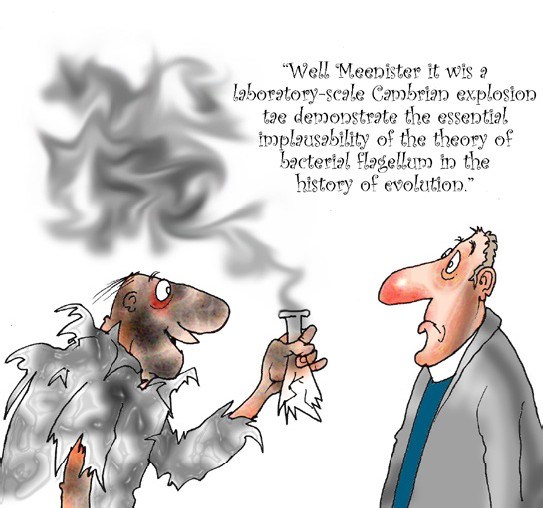LETTERS
Bible Gardens
Some four years ago my family and l visited the Biblical garden as featured in the August edition of Life and Work. The whole experience was wonderful. Many European visitors were there. There was so much peace as the only sound was the clicking of cameras. A visit never to be forgotten.
Barbara Burrows, St Ayle Linked with Crail.
Many thanks to Andrew Torrance for the inspiring article in the August Life and Work. It links emotionally and spiritually with the lovely article by Lynne McNeil “Biblical Plants and Sacred spaces” in the same issue.
I am a scientist and have just written an ebook The Great Discovery on Amazon for Kindle. Andrew’s one page encapsulated what I have been trying to say in this book and has chosen very beautiful words to do so.
My experience of scientific discovery has been that a deep faith and love for the subject is manifest. When this happens, the scientist becomes close to Jesus Christ and experiences his self-giving love.
We have this experience with plants in a garden too!
Thus a scientist or gardener investigating or immersing themselves in the natural world does so with Christ.
Not every scientist will accept this description and will not use these words to describe the awe and wonder which proceeds during discovery. But all creative workers feel they are in touch with a loving force which is outside themselves.
Andrew Torrance ends his article by saying that” knowing Jesus will not make any practical difference to natural scientists” but ends with showing a deeper relevance.
My emphasis is that knowing Jesus and the presence of God allows the universe and the Natural World (especially gardens!) to be seen and felt to be sacred and holy. It is this sanctity which the scientist must preserve as they act with humility in their investigations.
John Kusel, Cumbernauld
Referring to the article in the August Life and Work about plants in the Bible, our church in Cardross has had a Bible Garden since 1999. I quote from the invitation delivered to every home in the village:
The Bible Garden is a Millennium project, developed in the Hall grounds over the last two summers by a volunteer team.
When complete it will contain all the plants, flowers, shrubs and trees mentioned in the Bible which can be grown in this country. It will be a place to marvel at creation, recall our roots, and look forward to future growth.”
There are also seats where people can sit and admire the garden.
Sheila McGown, former Session Clerk Cardross Parish Church

Cartoon: Bill McArthur
Evolution Debate
Guy Douglas is right to point to interesting developments in evolutionary theory but Darwinism is hardly “in deep trouble” as he claims (Life and Work, September).
Of the authorities he quotes, Gerd Müller certainly believes that genetic variation is insufficient on its own as a basis for evolution and he calls for an interpretation of natural selection that integrates new components but he insists that his ideas “all rest firmly on evolutionary principles”. What he calls for is a new synthesis.
David Gelernter is not a biologist who has “come-out” but a mathematician “looking in”. He builds on Stephen Meyer’s writings and argues that chance cannot possibly account for all that we find.
But then, few evolutionary biologists believe that chance alone is responsible for the richness of life on earth.
Darwinism, as such, is not a threat to Christian faith, whatever some of its atheist disciples may say – except, that is, for Christians who take an unnecessarily literal view of Genesis.
I would counsel Christians against hitching their wagons to debates about the Cambrian ‘explosion’, the bacterial flagellum or the supposed lack of transitional forms. They may well back the wrong outcome.
God’s thoughts are not our thoughts.
He incorporates randomness and self-sufficiency as he wills, letting us see only the outskirts of his ways. We are unlikely to discover his footprints hidden in the crevices of evolutionary history. God is not in the wind or the earthquake or the fire but in “the sound of thin silence”, as one translation has it. Darwinism as such does not and cannot prove that the universe is mindless or that life is without purpose. The scientist, Russell Stannard is right to say that “God’s creativity has to be seen as permeating all time and space”.
Honest agnostics may be content to believe that a myriad small steps of development, sifted by natural selection, are a sufficient explanation of everything but the story can have different levels of explanation – involving molecules, genes or the conscious mind.
Does one explain the other?
A book may be explained in terms of pen and paper or neuron activity or creative imagination – and each level of explanation is valid. As for the author – search as we will, we cannot prove from within the pages that there is one. In the same way, God will not be caught in our beam, however powerful the searchlight.
Darwinism is part of the rich story of evolution and will itself evolve – and the heavens will remain to tell out the glory of God. The physicist, Eugene Wigner, gives his verdict that “the universe shows a beauty and a deep mathematical structure that strongly suggests an underlying mind, the mind of God.”.
Graham Hellier (Rev),
Marden, Hereford
Life and Work welcomes letters from readers of not more than 350 words which can be sent by email to magazine@lifeandwork.org during the Coronavirus Covid-19 epidemic.
For verification purposes letters must be accompanied by the writer’s name, address and daytime telephone number. Anonymous letters will not be published. In exceptional circumstances the Editor will consider publishing a letter withholding the details of the writer, provided verification can be made. The Editor reserves the right to edit letters for space and legal reasons.